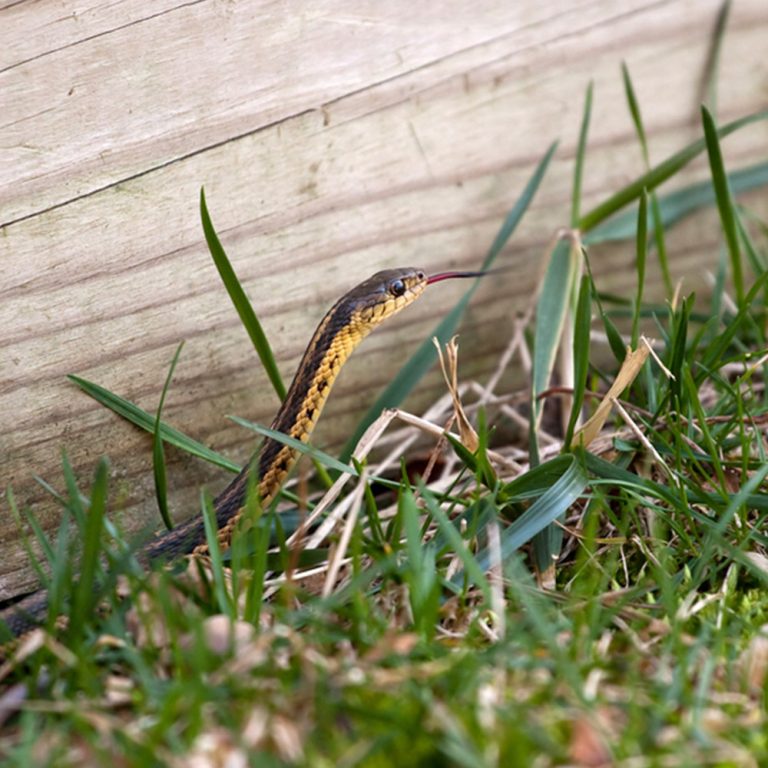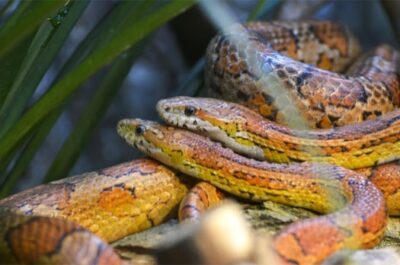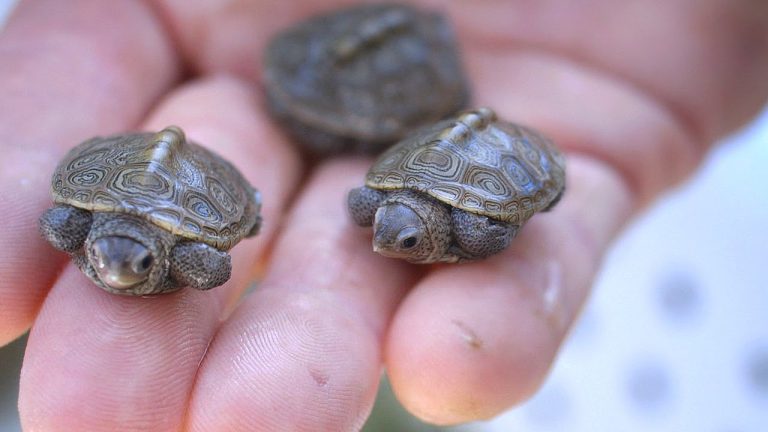What Do Cuban Tree Frogs Eat
Cuban tree frogs are an invasive species in Florida. They were introduced to the state in the 1920s and have since spread throughout the peninsula. The frogs are adaptable and can live in a variety of habitats, from swamps to urban areas.
Cuban tree frogs are opportunistic feeders and will eat just about anything they can fit in their mouths. This includes other frogs, lizards, small mammals, and insects. The frogs have even been known to eat bird eggs and nestlings.
While their diet is varied, Cuban tree frogs prefer to eat insects.
What To Feed A Cuban Tree Frog
Cuban tree frogs are interesting creatures that many people enjoy keeping as pets. They are native to Cuba and the Bahamas, and their diet consists mostly of insects. In the wild, they will eat just about any type of insect they can find, including moths, crickets, beetles, and flies.
If you’re thinking about getting a Cuban tree frog as a pet, it’s important to know what to feed them so they can stay healthy and happy.
There are a few different options for feeding your Cuban tree frog. One is to purchase live insects from a pet store or online retailer.
This is usually the best option because it closely mimics their natural diet. You can also purchase freeze-dried insects, which can be found at some pet stores or online. These aren’t quite as nutritious as live insects, but they’re still a good option if you can’t get your hands on live ones.
If you choose to feed your Cuban tree frog live insects, there are a few things you need to do first. You’ll need to dust the insects with calcium powder to ensure your frog gets enough of this essential nutrient. You should also gut-load the insects by feeding them nutritious foods 24 hours before you plan to feed them to your frog.
This will help make sure your frog gets all the nutrients it needs from its food.
When feeding time comes around, simply place the insect in front of your Cuban treefrog and let it do its thing!
How to Get Rid of Cuban Tree Frogs
Cuban tree frogs are a common problem in Florida. They are an invasive species that can do serious damage to your home and property. If you have Cuban tree frogs on your property, it is important to take action to remove them as soon as possible.
There are a few different ways that you can get rid of Cuban tree frogs. One option is to trap them. This can be done by using a variety of different traps, including live traps, glue traps, and bait traps.
Another option is to use pesticides. There are a variety of different pesticides that are effective against Cuban tree frogs. Finally, you can also try to remove them manually.
This can be done by hand or with the help of a tool like a net.
Whichever method you choose, it is important to be persistent in your efforts to remove Cuban tree frogs from your property. It may take some time and effort, but eventually you will be successful in getting rid of these pesky creatures!
Are Cuban Tree Frogs Poisonous
Yes, Cuban tree frogs are poisonous. They contain a toxic substance called bufotenin, which can cause nausea, vomiting, and seizures if ingested. Bufotenin is also a hallucinogen, so ingesting even a small amount of this toxin can result in serious health consequences.
Cuban Tree Frog Sound
Many people are familiar with the sound of a tree frog, but did you know that there are many different species of tree frogs? One of these is the Cuban tree frog.
The Cuban tree frog is found on the island of Cuba, as well as on some of the surrounding islands.
They are also found in Florida, where they have been introduced. These frogs can grow to be quite large, up to four inches in length!
Cuban tree frogs are green or brown in color, and have dark spots on their backs.
Their bellies are usually white or light-colored. These frogs can change their color somewhat, depending on the temperature and humidity.
The Cuban tree frog is nocturnal, meaning that it is most active at night.
During the day, they will often hide in trees or bushes to stay cool and avoid predators. At night, they come out to hunt for insects to eat. They will also eat other small animals if they can catch them.
One interesting thing about Cuban tree frogs is that they can absorb water through their skin! This helps them to stay hydrated even if there isn’t much water available. It also allows them to live in areas that other amphibians couldn’t survive in.
If you ever hear a loud “croaking” sound coming from a tree at night, it could very well be a Cuban tree frog!
How was the Cuban Tree Frog Introduced
The Cuban tree frog was introduced to the Florida Keys in the early 1900s. It is believed that the frogs were brought over from Cuba by ships that were carrying plants and other animals. The frogs likely escaped from their crates and made their way into the wild, where they have thrived ever since.
The Cuban tree frog is a voracious eater and has few predators in Florida. As a result, it has become one of the most common amphibians in the state. The frog is often seen near human habitations, such as houses and businesses, where it preys on insects attracted to lights at night.
While the Cuban tree frog is not considered harmful to humans, it can be a nuisance. The frog’s loud mating call can keep people up at night, and its large size (up to four inches long) can make it difficult to remove from buildings if it gets inside. In addition, the Cuban tree frog will eat native amphibians if given the chance, which can disrupt local ecosystems.
Cuban Tree Frog Poisonous to Dogs
As a pet owner, it’s important to be aware of the potential dangers that your furry friend may encounter. While most frogs are harmless, there is one type in particular that can pose a serious threat to dogs – the Cuban tree frog.
These amphibians are native to Cuba and the Bahamas, but they have also been introduced to other areas of Florida.
Cuban tree frogs are relatively large, often reaching lengths of 3-4 inches. They are usually green or brown in coloration, with darker spots on their backs.
While they may look harmless enough, Cuban tree frogs produce a toxic substance that can be dangerous to dogs if ingested.
This toxin affects the nervous system and can cause muscle tremors, paralysis, and even death. If you think your dog has come into contact with a Cuban tree frog, it’s important to seek veterinary care immediately.
Fortunately, there are steps you can take to help prevent your dog from coming into contact with these amphibians.
Keep your yard clean and free of debris where frogs might hide. And if you live in an area where Cuban tree frogs are known to exist, consider keeping your dog on a leash during walks outside. By taking these precautions, you can help keep your four-legged friend safe from harm!
How to Identify Cuban Tree Frog
If you live in the southeastern United States, you may be familiar with the Cuban tree frog. This species of tree frog is native to Cuba and the Bahamas, but has become established in Florida. Cuban tree frogs are large frogs, reaching up to three inches in length.
They are brown or greenish-brown in color, with darker spots on their backs. Cuban tree frogs have suction cups on their toes that help them climb trees and buildings.
Cuban tree frogs are not considered to be harmful to humans, but they can be a nuisance because they compete with native species for food and shelter.
If you think you have seen a Cuban tree frog, it is best to contact your local wildlife agency or university for positive identification.
Why are Cuban Tree Frogs Bad
Cuban tree frogs are considered to be bad because they are an invasive species. They were introduced to Florida in the 1920s and have since spread throughout the state. These frogs are a threat to native wildlife because they compete for food and habitat, and can carry diseases that harm other animals.
Should I Kill Cuban Tree Frogs
Most people are unaware that Cuban tree frogs are an invasive species in Florida. These frogs were introduced to the Sunshine State via the cargo ships that travel between Cuba and Florida. While they may be cute, these amphibians are wreaking havoc on native wildlife populations.
Cuban tree frogs prey on a variety of small animals, including lizards, snakes, and rodents. They have also been known to eat other frog species. This has had a devastating effect on native amphibian populations, which are already declining due to habitat loss and pollution.
In addition to their predatory habits, Cuban tree frogs are also carriers of a fungus that is deadly to native amphibians. This fungus, called chytridiomycosis, is responsible for the decline of many amphibian species around the world.
So what should you do if you spot a Cuban tree frog?
The best course of action is to kill it. By removing these predators from the ecosystem, you can help give native amphibians a fighting chance at survival.

Credit: www.orlandosentinel.com
What Do You Feed Cuban Treefrogs?
Cuban treefrogs are omnivores, which means they will eat both plants and animals. In the wild, their diet consists of insects, small mammals, and reptiles. They have also been known to eat other frogs.
In captivity, you can feed your Cuban treefrog a variety of foods, including crickets, mealworms, pinkie mice, and even some vegetables. It’s important to offer a variety of food items to ensure they are getting all the nutrients they need.
When feeding live food items to your Cuban treefrog, it’s important to dust them with a calcium powder supplement to help prevent metabolic bone disease.
You can also offer them gut-loaded (recently fed) live food items to help boost their nutrient intake.
Where Do Cuban Treefrogs Go During the Day?
Cuban treefrogs are most active at night, but they may be seen during the day as well. They typically spend their days hiding in trees, shrubs, or other vegetation near water sources. When it is hot outside, they may be found basking in sunny areas or sitting in shallow pools of water.
How Long Does a Cuban Treefrog Live?
Cuban treefrogs are a species of frog that is native to Cuba and the Bahamas. They are also found on some of the smaller islands in the Caribbean. Cuban treefrogs are nocturnal creatures and they spend most of their time in trees, hence their name.
These frogs can grow to be quite large, with some specimens reaching lengths of up to 8 inches (20 cm).
As far as lifespan goes, Cuban treefrogs can live for quite a while in captivity. It is not uncommon for these frogs to reach ages of 15 years or more.
In the wild, however, their lifespan is likely much shorter due to predation and other factors.
Can You Have a Cuban Treefrog As a Pet?
Yes, Cuban treefrogs can be kept as pets. They are relatively easy to care for, but there are a few things to keep in mind. First, they need a humid environment, so a terrarium with a lid and a water bowl is necessary.
Second, they will eat just about anything that moves, so live food like insects or small lizards is necessary. Third, they can be aggressive and may bite if handled too much. Overall, Cuban treefrogs make interesting and relatively easy to care for pets.
Conclusion
Cuban tree frogs are carnivorous animals that eat a variety of small prey, including insects, spiders, and other small invertebrates. Their diet varies depending on the availability of food in their environment. In general, Cuban tree frogs will eat anything they can fit into their mouths!






